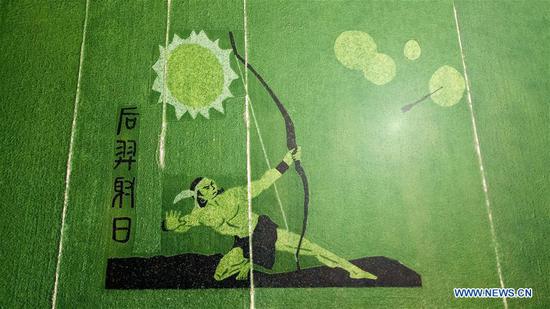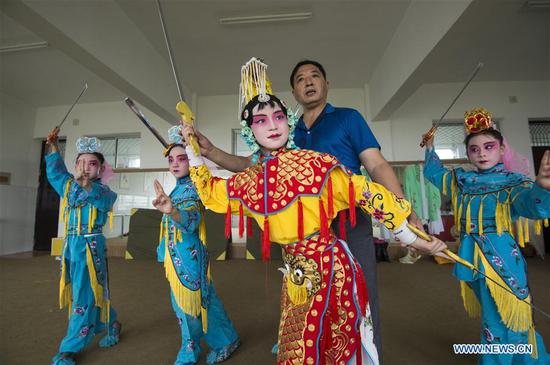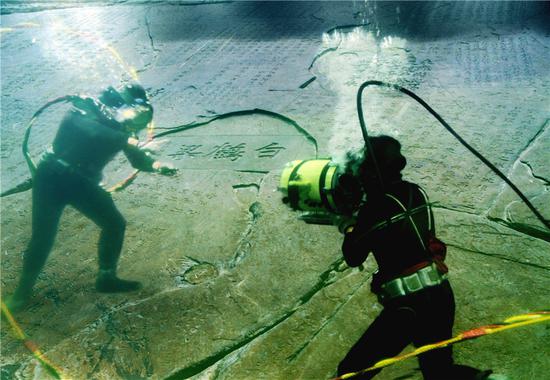
The ongoing exhibition, Sunken Treasures in Jiangkou Battlefield, at the National Museum of China, features a selection of artifacts excavated from the Minjiang River in Sichuan province that are believed to be the site where 17th-century peasant-uprising leader Zhang Xianzhong abandoned treasures while losing the war. (Photo by Jiang Dong/China Daily)
While most of the objects on display were unearthed during excavation work, other items were retrieved from a crackdown on organized artifact smuggling months before digging began.
Police smashed a well-equipped gang who made several dives in the Minjiang and recovered hundreds of gold and silver objects. Historians identified them as part of Zhang's sunken treasure trove, including a gold stamp with a tiger-shaped handle that weighed several kilograms.
The stamp's impression reads "yongchang dayuanshuai yin" (seal of the general of long prosperity). It confirms Zhang's self-proclaimed title a year before he established the short-lived Great Xi dynasty in Chengdu in 1644. He later abandoned the title and proclaimed himself king.
The dynasty lasted just four years. Zhang was later killed by Manchu armies of the Qing empire.
The stamp has been designated a first-class cultural relic of the State and is currently on show at the Sunken Treasures exhibition.
It was not until a month after they started digging that archaeologists began to make significant headway. Among the hundreds of objects they unearthed were a handful of gold and silver ingots and coins bearing Zhang's insignia, as well as a gold-embossed certificate from Zhang conferring titles on his concubines. These objects are also on display at the National Museum.


















































